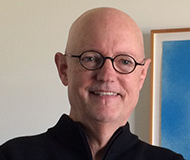
State: Calif.
Young: Setting the Agenda: [2018-12-27]
What is the likely 2019 agenda at the California Division of Workers’ Compensation?

Julius Young
We now have some clues, courtesy of a recent presentation by current DWC Administrative Director George Parisotto, who spoke at the December 2018 CHSWC meeting in Oakland.
Following the meeting I asked Parisotto if he would be willing to share the list of items he referenced in his talk. He graciously provided those.
Among the items is a plan to work with the Reed Group, publisher of the ACOEM Guidelines (which are the backbone of California’s Medical Treatment Utilization Schedule) to provide free access to the DWC medical treatment guidelines and online guidance tools.
Up to now many California physicians treating injured workers have not had subscription access to the guidelines they are supposed to follow. This may be one factor in the high rate of utilization review UR and independent medical review “friction."
Another matter in Parisotto’s enumerated list includes improving physician reporting forms. A draft PR-1 physician reporting form and request for authorization is currently posted for comment in a DWC online forum. The hope is that the form may create better physician documentation as to what treatment modalities are being sought, and the basis for the recommendations.
At the meeting the DWC indicated that it is studying data on how certain physicians may be driving a high volume of IMR activity.
In discussions during their meeting, Commission on Health and Safety and Workers' Compensation members expressed concern about the continuing high volume of IMR disputes and the cost of that program. Commissioner Angie Wei noted that the high volume of IMR was not what was envisioned and intended.
It was noted that Maximus is making a “shit-ton” of money and that perhaps they should be helping provide tips on how the system might be run better.
Several other commissioners joined in concern about the cost and volume of IMR (costing the system approximately $63 million per year), raising questions about what is driving the ongoing volume of IMR and how that might be reduced.
On Dec. 13 it was announced by the Newsom gubernatorial transition team that Wei will become the chief deputy cabinet secretary for policy development.
Given her new position, her past involvement in the 2012 reform negotiations and her focus on workers’ comp as a member of CHSWC, Wei will clearly be key to future workers’ comp policy developments in California.
Julius Young is a claimants' attorney for the Boxer & Gerson law firm in Oakland. This column was reprinted with his permission from his blog, www.workerscompzone.com.